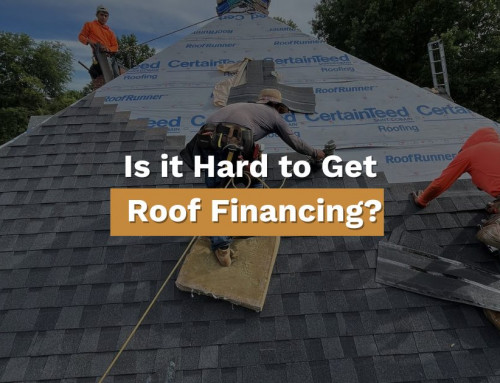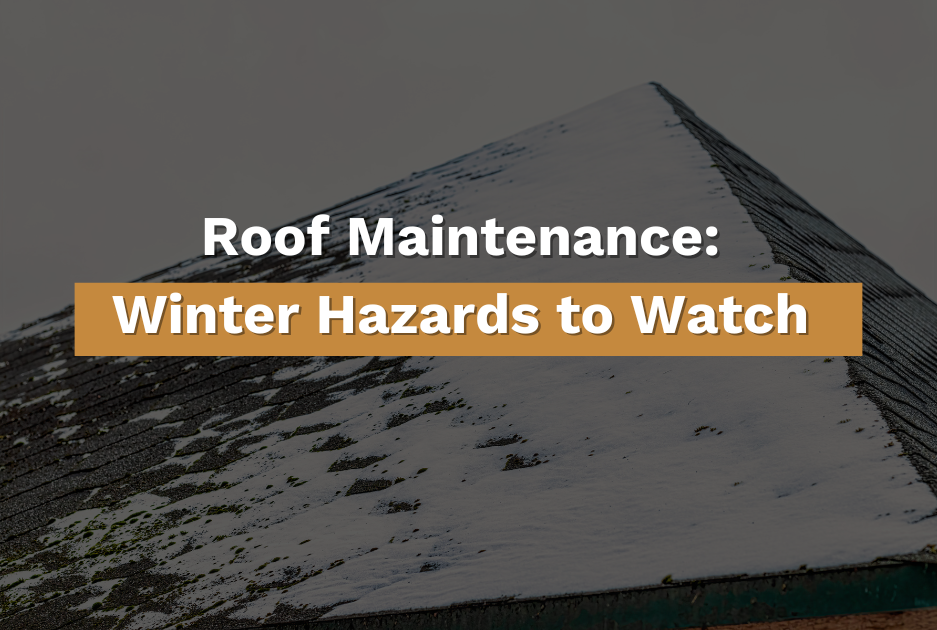
Highlights for Winter Roof Hazards
Winter can be harsh on your roof, leading to problems like ice dams, heavy snow, wind damage, flashing leaks, and icicles. These hazards can cause significant roof damage, leaks, and even structural issues. To prevent costly repairs, take proactive steps such as cleaning gutters, improving attic insulation, using roof rakes to remove snow, and inspecting for damage before the cold sets in. Regular maintenance, including professional roof inspections, minor repairs, and snow removal, will help keep your roof in good shape throughout the season and extend its lifespan. Don’t wait until problems arise—schedule preventive maintenance to save time and money in the long run.
Table of Contents
Roof Maintenance Near Me: Winter Hazards to Watch Out For
Winter is one of the most challenging seasons for your roof. Many homeowners deal with roof repairs or replacements during the colder months due to the challenges of freezing temperatures, snow, and ice. However, the good news is that by understanding these common winter roof problems and taking some preventive steps, including utilizing roof repair services, you can avoid many issues and keep your roof in good shape. Here, we’ll dive deeper into the main winter hazards and share practical advice on protecting your roof throughout the season.
Common Winter Roof Problems to Keep an Eye On
Winter brings a range of hazards that can impact the integrity of your roof. Here are some of the most common issues to watch out for:
-
Icicles: Pretty but Dangerous
Even though icicles may look beautiful when they sparkle in the winter sun, they can pose significant risks. These ice formations add considerable weight to your roof and gutters, potentially causing parts to break or collapse. Typically, icicles typically form when heat from your home escapes into the attic, melting the snow on your roof. As the water reaches the colder edges, it refreezes and forms icicles.
How to Prevent Them:
-
Clean Your Gutters: Clear leaves and debris from gutters before winter to ensure proper water drainage. Clogged gutters prevent melted snow from draining, increasing the risk of icicle formation.
-
Improve Insulation: Proper insulation keeps heat inside your home, reducing the chances of snow melting. Insulating the attic is crucial to keeping your roof at a consistent temperature.
-
Regular Inspections: Have a roofing professional check for potential roof issues before winter begins. Addressing minor problems can help you avoid more significant headaches during the colder months.
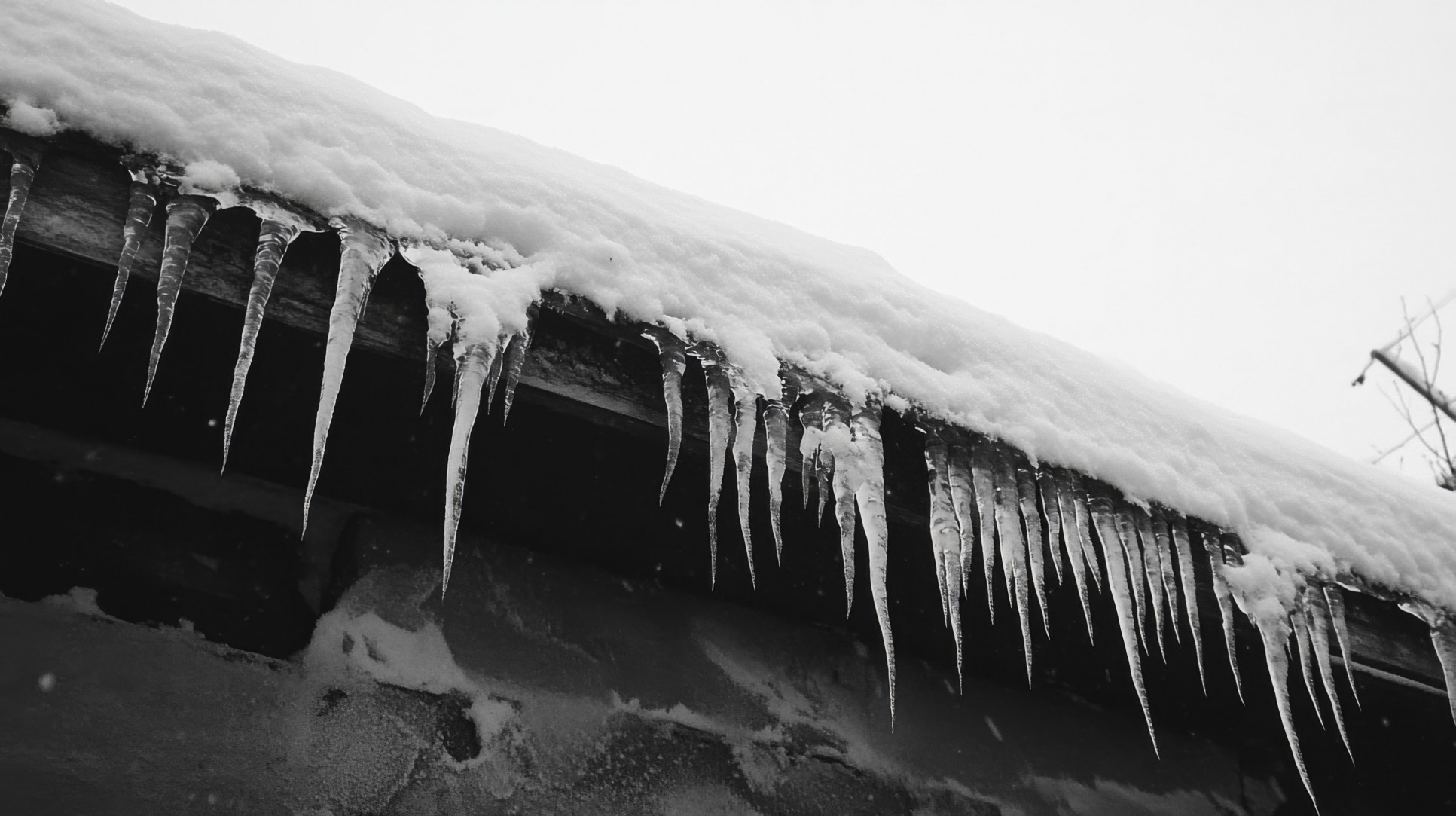
2. Ice Dams: A Recipe for Roof Leaks
Ice dams are a severe problem for many homeowners in winter. They form when snow on the roof melts due to heat escaping from the attic and then refreezes near the roof’s edge. This cycle creates a “dam” of ice that prevents additional melting snow from draining off the roof, leading to backed-up water that can seep into your shingles and cause leaks.
Tips for Keeping Ice Dams at Bay:
-
Proper Insulation and Ventilation: Make sure your attic is well-insulated and ventilated. This helps maintain a uniform temperature across the roof, reducing the likelihood of ice dam formation.
-
Roof Raking: Use a roof rake to remove snow from the edges before it can melt and refreeze. This simple yet effective method minimizes the risk of ice dams.
-
Heated Cables: Consider installing heated cables along the roof’s edge to melt any accumulating ice and prevent dams from forming. They are a more permanent solution, especially for areas prone to heavy snow.
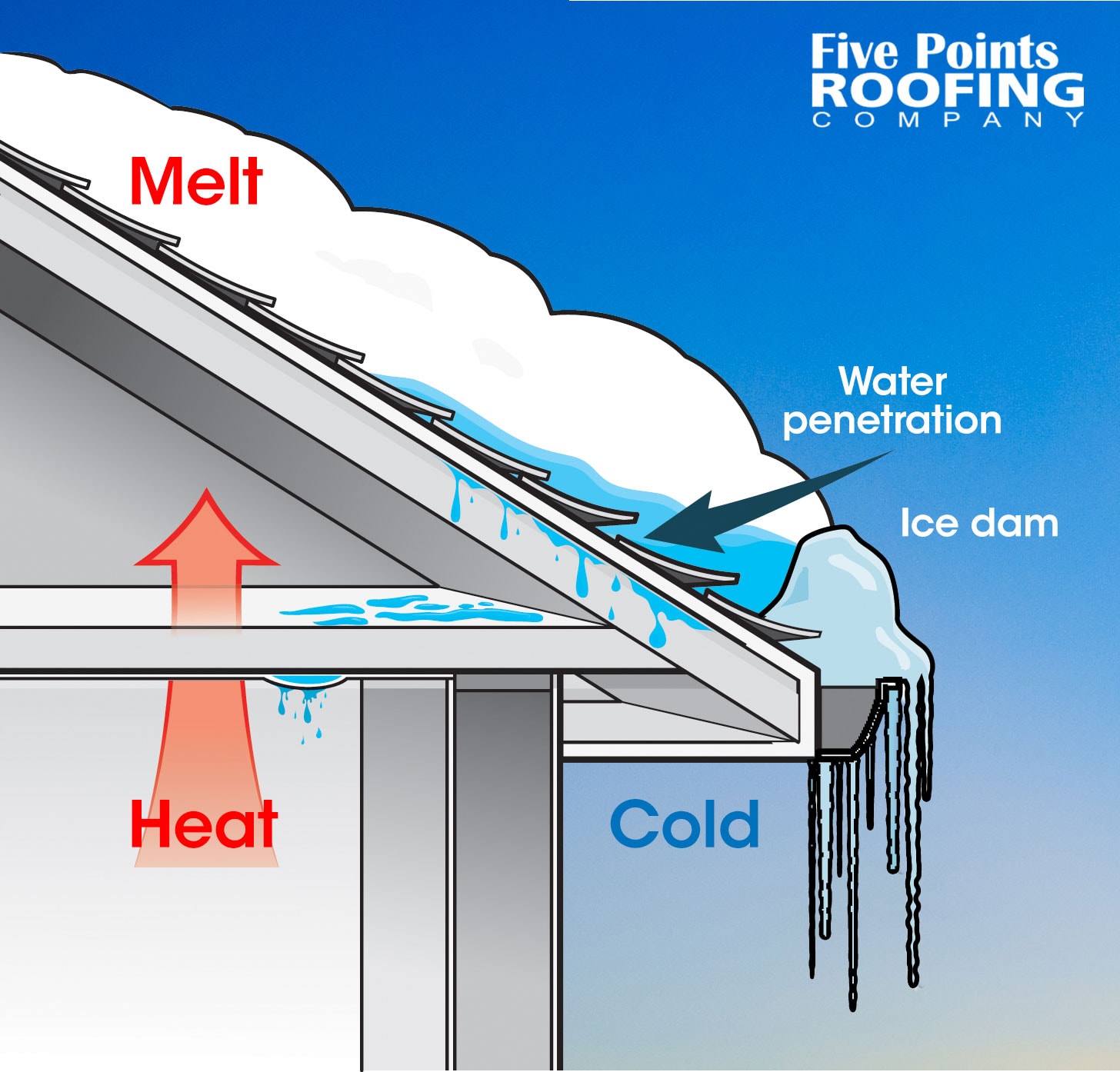
3. Flashing Leaks: A Common Cause of Winter Woes
Roof flashing seals joints around chimneys, skylights, vents, and other roof penetrations. While flashing is designed to keep water out, winter weather can cause leaks when water gets underneath and freezes. The freeze-thaw cycle expands any cracks, allowing more water to enter and worsening the damage.
-
Inspect Flashing Before Winter: Check for signs of damage, such as rust, gaps, or loose materials, and repair or replace any compromised flashing.
-
Seal Vulnerable Areas: Use a roof sealant around problem areas to add an extra layer of protection against moisture.
-
Professional Repairs: If you spot leaks around the chimney or skylights, get them fixed immediately. Delaying repairs can lead to more extensive damage.
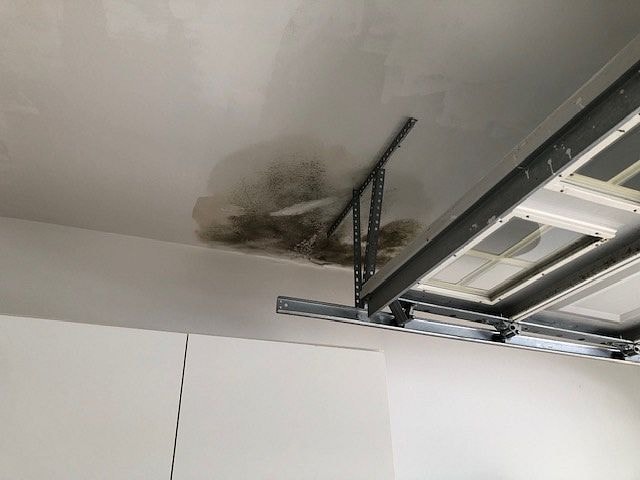
4. Snow Load: More Weight Than You Think
Heavy snowfall can add significant weight to your roof, potentially causing structural damage or collapse. While most roofs are built to handle snow loads, the roof’s age, material, and existing damage can make it more susceptible to problems. In some cases, the damage might be so extensive that a full replacement of the roof is necessary.
-
Snow Removal: Use a roof rake to remove heavy snow safely. Avoid using sharp tools that can damage the shingles.
-
Structural Reinforcement: Have a roofing professional inspect the areas around chimneys, skylights, and other features that may be more prone to sagging or collapse under heavy snow.
-
Annual Inspections: Schedule yearly roof inspections to identify any weak spots that need attention before winter arrives.
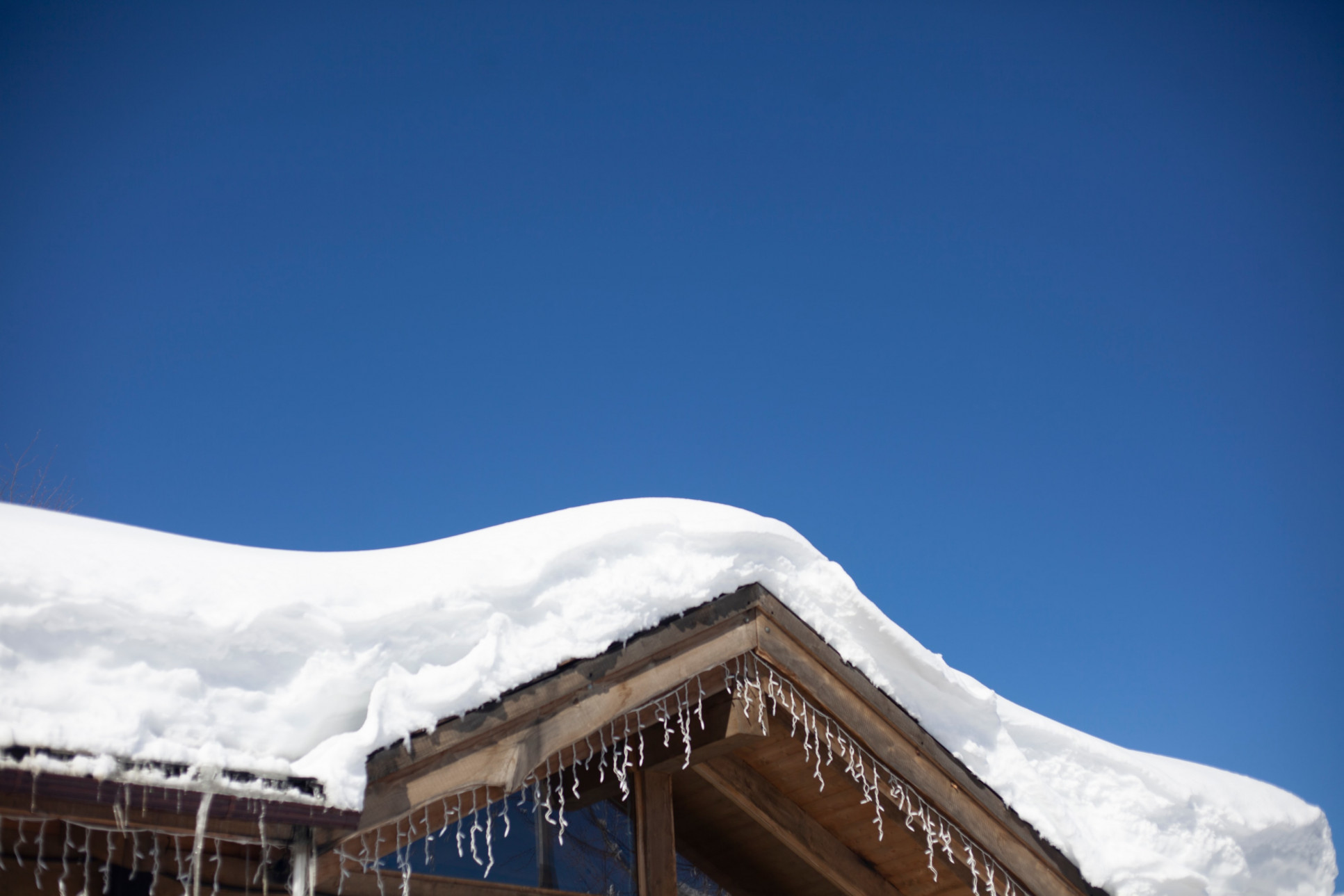
5. Wind Damage: More Than Just Missing Shingles
High winds are common during winter, especially during snowstorms. They can loosen or blow off shingles, leaving your roof vulnerable to leaks and water damage. In some cases, wind can lift roofing materials, exposing the underlying layers to the elements.
-
Inspect for Loose Shingles: Address any issues before winter hits. Even a single loose shingle can lead to significant roof damage if left unchecked.
-
Wind-Resistant Roofing Materials: If your roof needs replacement, consider upgrading to shingles designed to withstand high winds. Modern materials are better equipped to handle severe weather.
-
Trim Overhanging Branches: Cut any tree branches near your roof to prevent wind-blown debris from causing damage.
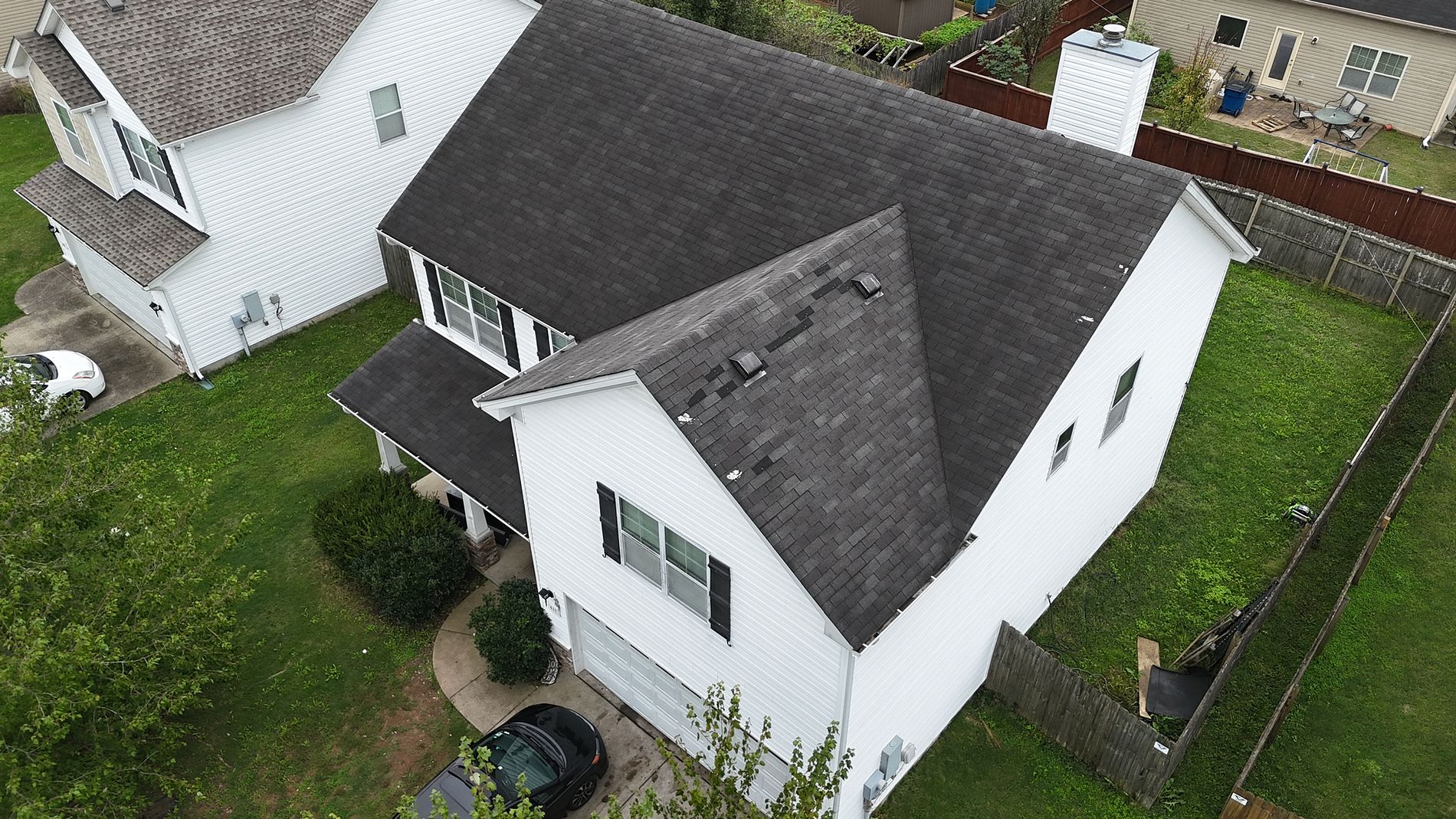
6. Cracks and Roof Leaks: The Freeze-Thaw Effect
Winter’s freeze-thaw cycle can wreak havoc on your roof. When water finds its way into small cracks in the roofing material and freezes, it expands, making the cracks bigger. Over time, this process can create leaks and other structural issues.
-
Regular Inspections: Check for any signs of damage, such as cracked shingles or missing granules, before winter begins.
-
Seal Cracks: Use a high-quality roof sealant to close any gaps that could let water in.
-
Professional Assistance: If your roof has a history of leaks, schedule an inspection with a roofing professional to assess any vulnerable areas.
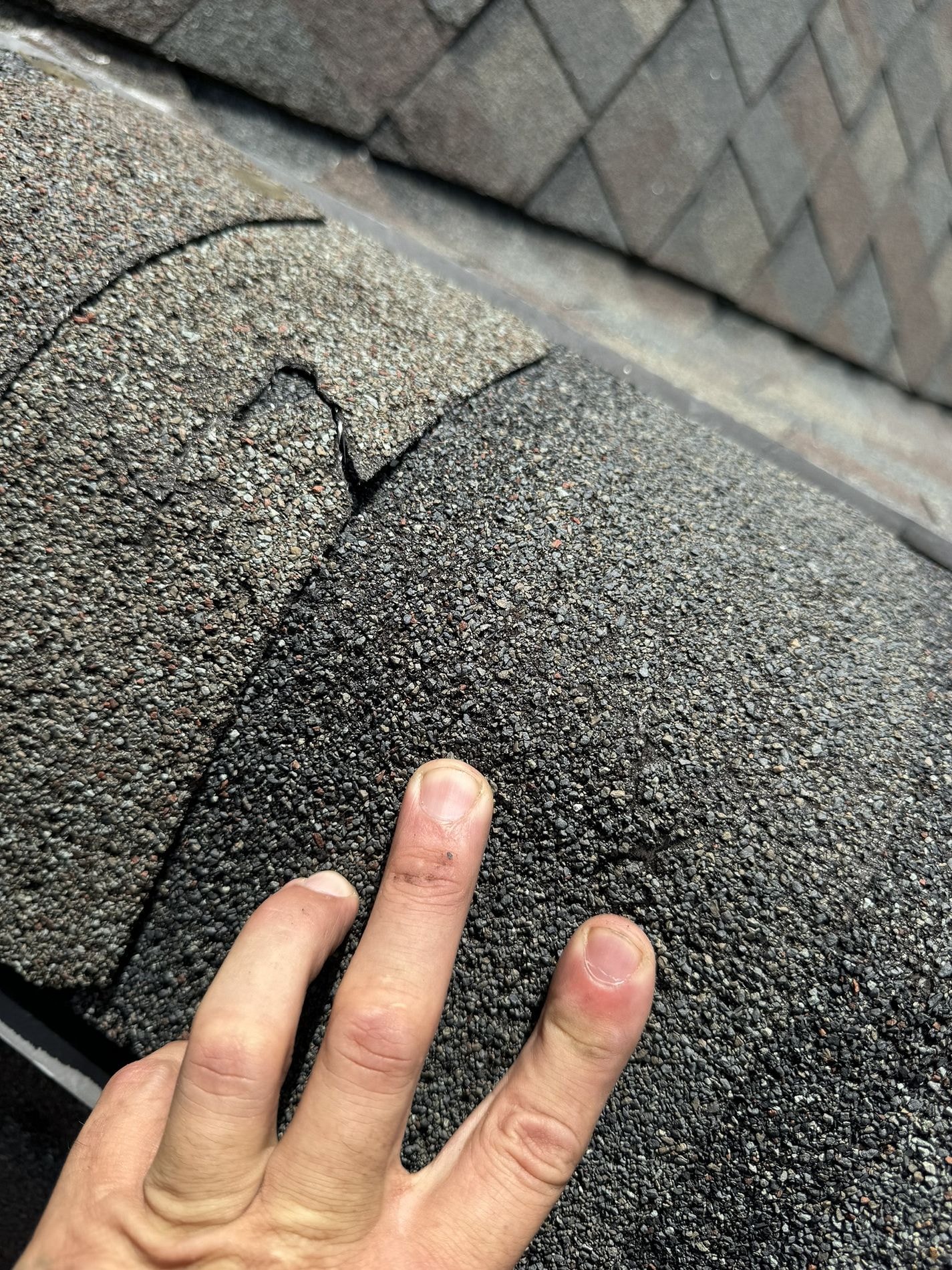
Essential Winter Roof Maintenance Services
Staying on top of roof maintenance is critical to avoiding winter-related damage. Here’s a list of essential roof maintenance services that homeowners should consider:
-
Professional Roof Inspections: Licensed and insured roof repair companies can perform a detailed inspection to spot issues that might worsen during winter. They can identify problems like cracks, loose shingles, or damaged flashing that must be addressed promptly.
-
Roof Repairs: From fixing leaks to replacing missing shingles and repairing chimney flashing, minor repairs can extend your roof’s life and prevent more significant problems.
-
Gutter Cleaning: Keeping gutters clean ensures that melting snow and rainwater drain properly, preventing ice dams and reducing the risk of roof damage.
-
Roof Sealant Application: Applying sealant to vulnerable areas like flashing or cracked shingles can provide an extra layer of protection against moisture.
-
Snow and Ice Removal: Hiring professionals to safely remove snow and ice buildup can help prevent structural damage.
Signs You Need Roof Repair
Roof repair is an essential part of maintaining your home’s integrity and preventing costly damages. However, it can be challenging to determine when your roof needs repair.
Here are some signs that indicate you need roof repair:
-
Leaky Roof: If you notice water stains on your ceiling or walls, it may be a sign of a leaky roof. Leaks can be caused by damaged or missing shingles, clogged gutters, or improper flashing. Addressing a leaky roof promptly can prevent further water damage and mold growth.
-
Missing Shingles: Missing shingles can expose your roof to the elements, leading to further damage and leaks. Check your roof for missing or damaged shingles, especially after a storm. Replacing missing shingles quickly can help maintain the roof’s integrity.
-
Hail Damage: Hail can cause significant damage to your roof, including dents, cracks, and broken shingles. If you’ve experienced a hail storm, inspect your roof for damage. Hail damage can compromise the roof’s protective layer, making it essential to address any issues immediately.
-
Roof Age: If your roof is nearing the end of its lifespan (typically 20-30 years), it may be time to consider roof replacement. Old roofs can be prone to leaks, cracks, and other issues. Regular inspections can help determine if a full roof replacement is necessary.
-
Sagging Roof: A sagging roof can be a sign of structural damage or water accumulation. If you notice your roof is sagging, contact a roof repair company immediately. Structural issues can pose significant safety risks and should be addressed by professionals.
-
Metal Roof Issues: Metal roofs can be prone to rust, corrosion, and other issues. If you notice any damage or rust on your metal roof, contact a professional for metal roof repairs. Regular maintenance can help extend the life of your metal roof and prevent costly repairs.
-
Chimney Flashing: Chimney flashing is a common area for leaks and damage. If you notice any issues with your chimney flashing, contact a professional for repairing chimney flashing. Properly sealed flashing can prevent water from entering your home.
-
Gutter Issues: Clogged or damaged gutters can cause water to back up and damage your roof. Make sure to clean your gutters regularly and consider gutter guards to prevent debris accumulation. Proper gutter maintenance can help prevent roof leaks and water damage.
-
Roof Ventilation: Proper roof ventilation is essential to prevent moisture buildup and extend the life of your roof. If you notice any issues with your roof ventilation, contact a professional for assistance. Good ventilation can help regulate temperature and reduce the risk of ice dams.
-
Pressure Washing: While pressure washing can be beneficial for cleaning your roof, it can also cause damage if not done properly. Avoid using high-pressure washes on your roof, and consider hiring a professional for roof cleaning services. Gentle cleaning methods can help maintain your roof’s condition without causing damage.
If you notice any of these signs, it’s essential to contact a roof repair company to assess the damage and provide a solution. Regular roof maintenance services can help prevent these issues and extend the life of your roof.
Long-Term Benefits of Roof Maintenance
While it might be tempting to put off roof maintenance, neglect can lead to more severe and expensive issues down the line. Here’s why keeping up with roof care pays off:
-
Cost Savings: Proactive maintenance reduces the likelihood of needing significant repairs or a complete roof replacement. Regular roof maintenance services can save homeowners thousands of dollars in potential damage.
-
Extended Roof Life: Routine care helps maintain the roof’s structural integrity, extending its lifespan.
-
Safety and Comfort: A well-maintained roof protects your home from the elements, keeping you warm and dry during the harsh winter.
Why Choose Five Points Roofing?
At Five Points Roofing, we know the unique challenges that winter weather can pose for homeowners in Franklin, TN, and the surrounding areas. Our family-owned company has decades of experience providing reliable roofing services, from repair and maintenance to complete replacements. Here’s what sets us apart:
-
Licensed and Insured Professionals: Our team is fully licensed and insured, ensuring you get top-quality service and peace of mind.
-
Comprehensive Roofing Services: Whether you need help fixing a leaky roof, replacing shingles, or installing new roofing materials, we handle all aspects of roof care.
-
Customer-First Approach: We’re committed to doing the job right and ensuring our customers are delighted. Your safety and the protection of your home are our top priorities.
Preparing Your Roof for Winter: Steps to Take Now
As winter approaches, here are some steps you can take to get your roof ready for the season:
-
Schedule a Roof Inspection: Before the first snowfall, have a professional assess the condition of your roof. This can catch issues early and prevent them from worsening in the cold.
-
Clean the Gutters: Ensure gutters and downspouts are debris-free to allow melting snow to drain correctly.
-
Trim Tree Branches: Keep branches away from the roof to reduce the risk of damage from wind or falling limbs.
-
Install Attic Insulation: Proper insulation helps keep your attic cool and prevents heat from escaping, reducing the risk of ice dams.
-
Use a Roof Rake After Snowstorms: Safely remove excess snow buildup to minimize stress on the roof.
Avoid the High Cost of Roof Neglect
Ignoring roof maintenance can lead to bigger problems like water damage, mold growth, or even structural failure. Many roofing companies report increased emergency calls during winter due to issues that could have been prevented with some basic TLC earlier in the year. Don’t wait until you have a problem—invest in regular maintenance to save yourself from headaches.
Conclusion
Winter can be rough on your roof, but it doesn’t have to be. Understanding the common hazards and taking proactive steps can keep your roof in top shape and avoid costly.



